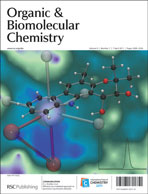Abstract
Peroxidation is an important process both in chemistry and biology, and peroxyl radicals play a crucial role in various pathological situations involving

- This article is part of the themed collection: Free Radical Chemistry special themed issue in memory of Athel Beckwith

 Please wait while we load your content...
Please wait while we load your content...